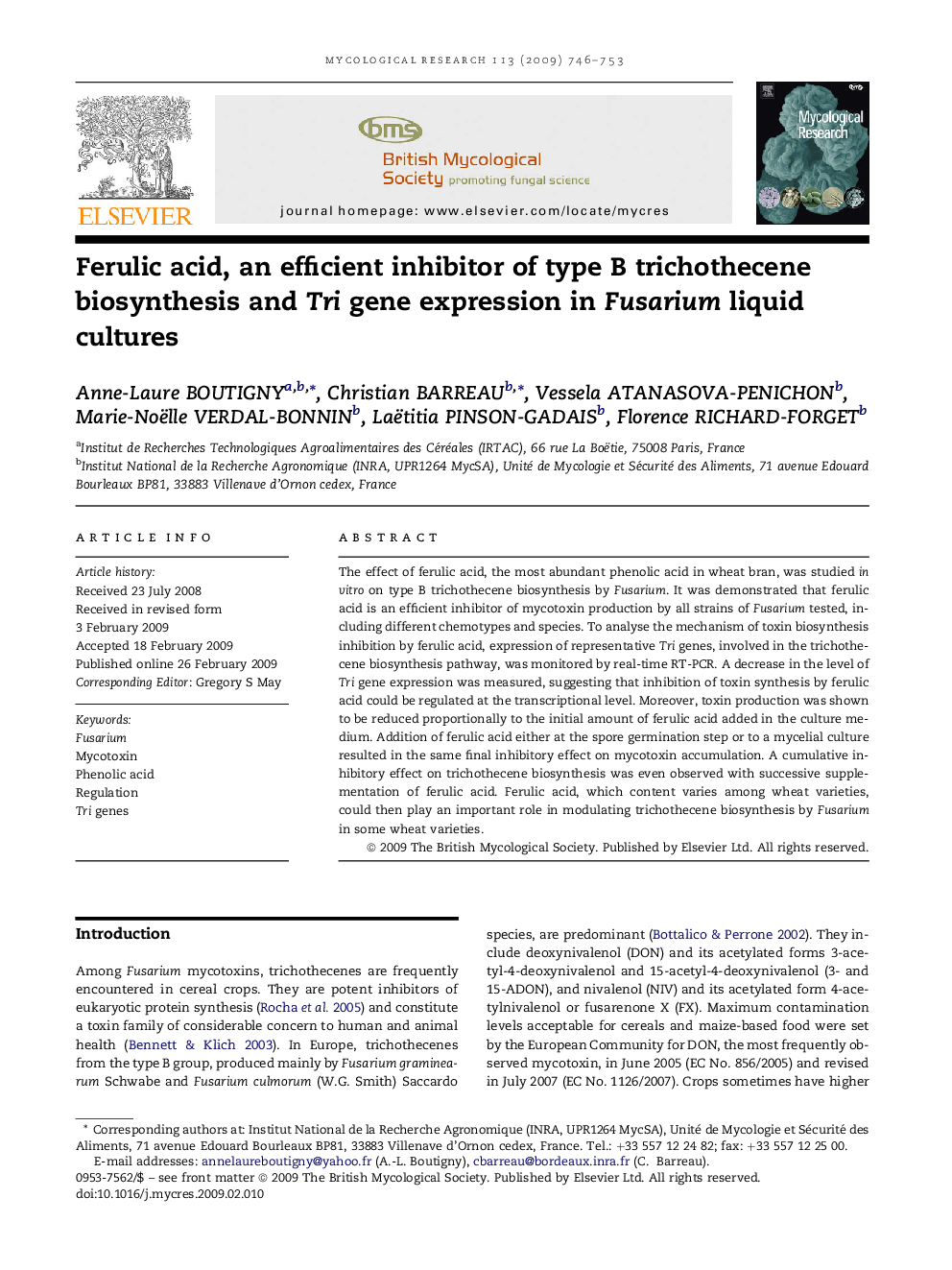| Article ID | Journal | Published Year | Pages | File Type |
|---|---|---|---|---|
| 4357630 | Mycological Research | 2009 | 8 Pages |
The effect of ferulic acid, the most abundant phenolic acid in wheat bran, was studied in vitro on type B trichothecene biosynthesis by Fusarium. It was demonstrated that ferulic acid is an efficient inhibitor of mycotoxin production by all strains of Fusarium tested, including different chemotypes and species. To analyse the mechanism of toxin biosynthesis inhibition by ferulic acid, expression of representative Tri genes, involved in the trichothecene biosynthesis pathway, was monitored by real-time RT-PCR. A decrease in the level of Tri gene expression was measured, suggesting that inhibition of toxin synthesis by ferulic acid could be regulated at the transcriptional level. Moreover, toxin production was shown to be reduced proportionally to the initial amount of ferulic acid added in the culture medium. Addition of ferulic acid either at the spore germination step or to a mycelial culture resulted in the same final inhibitory effect on mycotoxin accumulation. A cumulative inhibitory effect on trichothecene biosynthesis was even observed with successive supplementation of ferulic acid. Ferulic acid, which content varies among wheat varieties, could then play an important role in modulating trichothecene biosynthesis by Fusarium in some wheat varieties.
